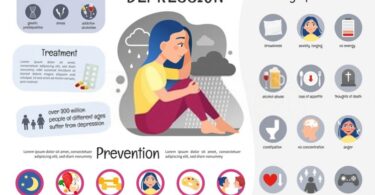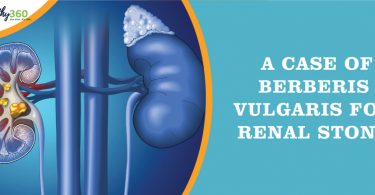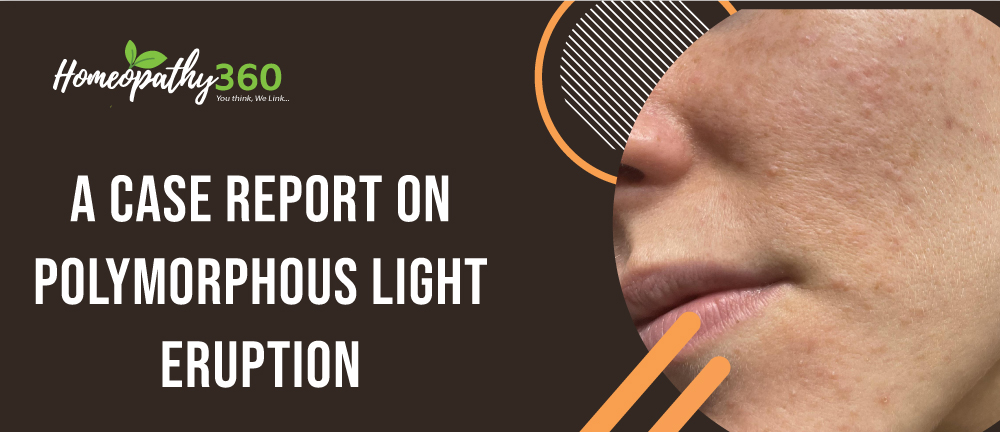
ABSTRACT – The following case report is of polymorphous light eruption which is a type of photodermatoses in 24-year-old female. She was treated successfully with individualised homoeopathic medicine selected on the basis of totality of symptoms after repertorisation. Her complained improved markedly and did not relapse despite being sun exposed. This case report illustrates positive role of homoeopathic treatment in managing cases of photodermatoses.
KEYWORDS – Polymorphous light eruption, photodermatoses, homoeopathy, individualised homoeopathic medicine
ABBREVIATIONS-
Polymorphous light eruption (PMLE), ultraviolet rays (UVR), lupus erythematosus (LE), psoralen + ultraviolet light A (PUVA), last menstrual period (LMP)
INTRODUCTION
Polymorphous light eruption (PMLE) is the most common photodermatoses worldwide. Photodermatoses refers to skin disorders which are exacerbated or induced by light. Harmful effects of light on skin are almost entirely due to radiation within the ultraviolet spectrum of the sun’s emission. UVR having wavelength between 200 to 400 nm penetrates epidermis (UV- B ) and dermis (UV- A) and can induce sunburn, tanning, epidermal hyperplasia, photoaging and photo- carcinogenesis. Photodermatoses is classified in four groups: (A) Idiopathic (immunologically mediated) photodematoses; (B) Drug/ chemical induced photodermatoses; (C) Genetic and metabolic photodermatoses; and (D) photo-aggravated dermatoses.[1,2]
PMLE is types of idiopathic photodermatoses which occurs mostly in 3rd – 4th decade of life and have female prepondence. It develops few hours or days after light exposure on sun exposed parts. It is relapsing in nature. Clinical picture of PMLE may be polymorphic or monomorphic lesions. Eruptions can be small, itchy papules, vesicles or plaques on erythematous background. The skin lesions resolve spontaneously within several days of ceasing sun exposure. [2]
Differential diagnosis of papular or papulovesicular type include photoallergic eczema, ictus or prurigo simplex. Plaque-type lesions must be differentiated from delayed onset solar urticaria, erythema multiforme and lupus erythematosus (LE). [3]
Photoprotection is the mainstay treatment in all photodermatoses. Other treatment methods are systemic or tropical steroids, antihistamines and skin hardening by preventive UV phototherapy and ⁄or psoralen plus UVA (PUVA). [1, 2, 3]
According to homoeopathy, photodermatoses is predominantly disease of psoric miasm.
Homoeopathic treatment is aimed at managing treatment of manifested polymorphous light eruption during acute phase and prevention of recurrence even on exposure to light using homoeopathic medicines selected on the basis of individualisation to the highest degree clinically possible.
Here, a case of photodermatoses is presented that was treated with the homoeopathic medicines.
Case report
PRESENTING COMPLAINTS:
A 25-year old female patient visited clinic on 8-02-2021 with complain of reddish, small, multiple pruritic, vesicular eruptions on face since last 6-7 months (Fig-1). Skin eruptions < sun heat.
Itching with desire to scratch, after scratching watery discharge comes out and where it touches the skin, new eruptions begin to appear. Itching >cold water.
HISTORY OF PRESENT COMPLAINTS:
The reddish eruptions first appeared on dorsal side of hand for which patient took allopathic treatment for 7 days. After these treatment, eruptions disappeared, but after 3-4 days theyagain started to reappear on hand and face, patient took allopathic treatment for another 3-4 months with temporary relief.
PAST HISTORY: No significant history.
PERSONAL HISTORY: She was preparing for civil services and lived in joint family.
PHYSICAL GENERAL:
- Thermal reaction-hot
- Thirst-Decreased, 3-4 glass in a day
- Desire- salt
- Menstrual history- LMP -28-01-2021, duration of menses: 3-4 days, cycle: 28-30 days
MENTAL GENERALS:
- She didn’t want to tell anything about her personal life. Reserved nature.
- Angry on small things, and when anyone asked her about the cause of her anger, she didn’t like it. She does not like to be consoled.
- Liked to be alone when sad. She did not like company.
- Wept without any cause.
CLINICAL FINDING: Small, reddish, vesicular eruptions on face; multiple in number. Skin was dry in texture.
DIAGNOSIS: Polymorphous light eruption. [3]
ANALYSIS AND EVALUATION OF SYMPTOM WITH MIASMATIC ANALYSIS [4]:
| S.no. | Symptom | Type of symptom | Intensity | Miasmatic analysis |
| Causeless weeping tendency | Mental generals | +++ | Psora | |
| When angry, consolation aggravated | Mental generals | ++ | – | |
| Wanted to be alone | Mental generals | +++ | Syphilis | |
| Thermal- hot | Physical generals | ++ | Psora | |
| Desire- salt | Physical generals | +++ | Psora | |
| Thirst- decreased | Physical generals | ++ | Psora | |
| Small reddish eruption on face | Particulars | ++ | Psora | |
| Eruptions <sun heat | Particulars | +++ | Psora | |
| Itching >cold water | Particulars | +++ | Psora |
TOTALITY OF SYMPTOMS: –
- Causeless weeping tendency
- Want to be alone
- Reserved nature
- Consolation aggravated the complaints
- Thermal-hot
- Desire-salt
- Thirst -decreased
- Small reddish eruption on face
- Eruptions <sun heat
- Itching >cold water
Repertorial sheet: Fig-2
Selection of remedy and potency with justification: Natrum muriaticum was prescribed on the basis of totality of symptoms and reportorial analysis. It covered 8 out of 10 rubrics, and got highest marks (22). Moreover, on referring to materia medica [5,6] , Natrum muriaticum seemed most appropriate similimum than other indicated medicines on repertorisation, i.e. Sulphur (15/9), Phosphorus (14/8), Calcarea carbonica (13/8), Cinchona officinalis (13/8) and Arsenicum album (10/8) as patient was reserved in nature, consolation aggravation, sad and weeping mood without cause, great longing for salt, sun aggravation and had vesicular eruptions. 30CH was given on the basis of susceptibility. [7]
Prescription: Natrum muriaticum 30/ thrice daily for 3 days, Rubrum 30 / thrice daily for 15 days.
General management: Patient was advised to avoid any external applications including medicated soaps and cosmetics. She was advised to apply coconut oil only.
Follow-up
| Date | Symptom | Prescription |
| 22-02-2021 | Slight relief in redness and itching on face. New small vesicular eruption appeared around ala nasi and upper lip. | Rx Natrum muriaticum 200/ 1 dose/ HS Rubrum 30 /TDS for 14 days |
| 8-03-2021 | No new eruptions appearing. Old eruptions and redness are reducing in intensity. Relief in itching. (Fig 3) | Rx Rubrum 30 /TDS for 14 days |
| 22-03-2021 | Old eruptions disappeared despite being sun exposed. Few new vesicular eruptions above upper lip appeared, but no itching and redness. | Rx Rubrum 30 /TDS for 14 days |
| 5-04-2021 | Improvement. No new eruptions with relief in old complaints despite exposure to sun. (Fig 4) | Rx Rubrum 30 /TDS for 14 days |
| 19-04-2021 | Improvement. No recurrence of symptoms. | Rx Rubrum 30 /TDS for 14 days |
Conclusion:-
A 25-year old female presented with polymorphous light eruption .Individualised homoeopathic medicine was prescribed selected after repertorisation with Synthesis Repertory. Presenting complaints improved gradually without any episodes of recurrence of symptoms. This case shows positive role of homoeopathy in treating polymorphous light eruption.
Declaration of patient
consent
All appropriate patient consent forms were obtained.
Patient has given his consent for her images and other clinical information to
be reported in the journal.
Conflicts of interest
None declared.
References:
- Khanna Illustrated Synopsis of Dermatology and Sexually Transmitted Diseases. 5th ed. India. Elseiver India Pvt. Ltd; 2016
- Bylaite M, Grigaitiene J, Lapinskaite GS. Photodermatoses: classification, evaluation and management. British Journal of Dermatology [Internet]. 2009 Nov [cited 2021 Aug 20];161:61-8. doi: 10.1111/j.1365-2133.2009.09451.x
- Lehmann P, Schwarz T. Photodermatoses: diagnosis and treatment. deutsches Ärzteblatt International [Internet]. 2011 Mar [cited 2021 Aug 20];108(9):135. Doi: 10.3238/arztebl.2011.0135
- Patel R.P. Chronic miasms in Homoeopathy and their cure with classification of their rubrics/ symptoms in Dr. Kent’s repertory- (Repertory of miasms), Indian edition. Kerela: Hahnemann Homoeopathic Pharmacy; 1996.
- Hering C. Guiding Symptoms of our Materia Medica. New Delhi: B. Jain Publishers(P)Ltd; 2014.
- Boericke W. New Manual of Homoeopathic Materia Medica. New Delhi: B. Jain Publishers(P)Ltd; 2014.
- Hahnemann S. Organon of medicine. Boericke W, Dudgeon R, editors. New Delhi: B. Jain Publishers (P) Ltd.; 2011.
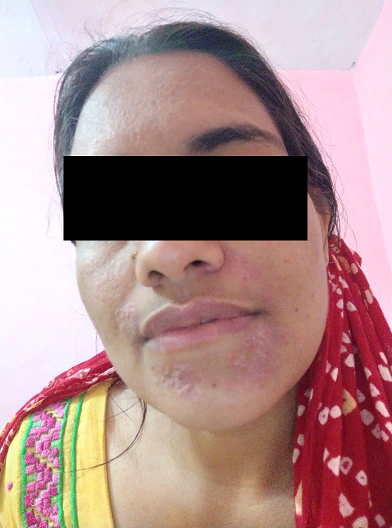
Fig -1: First visit dated 8-02-2021 (Before treatment)
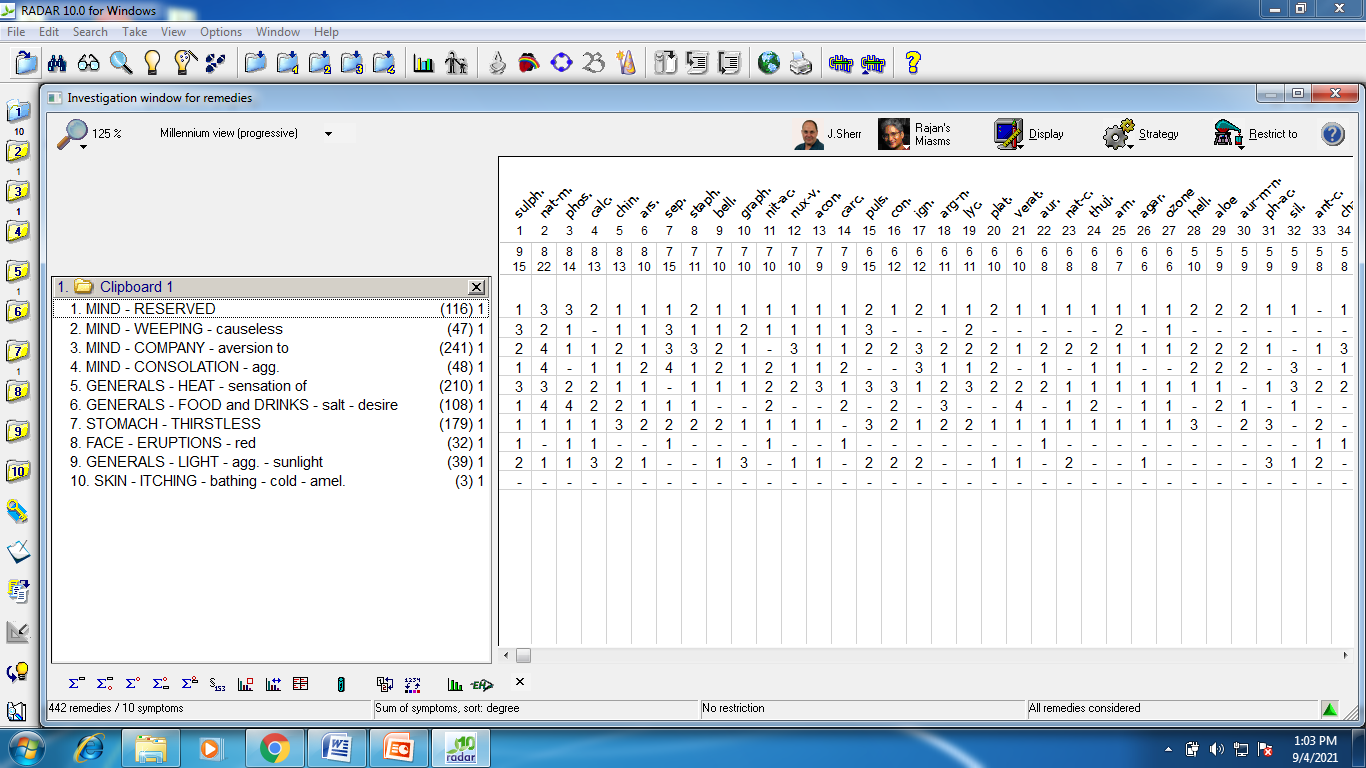
Fig- 2
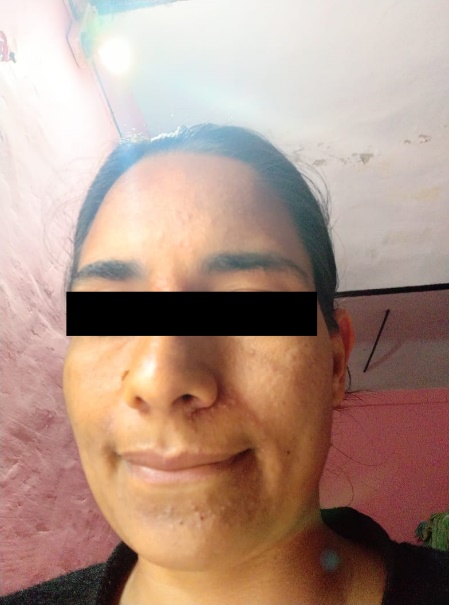
Fig-3: Date-8-03-2021
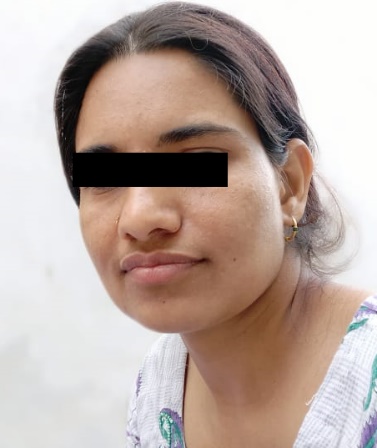
Fig 4: Date- 5-04-2021 (After treatment)
About Author:
Dr Ashok Yadav , Dr Kanika Agarwal2 , Dr Sonu Mahiya2, Dr Priyanka Nagar2
1 Professor (HOD), Department of Practice of medicine, Dr. MPK Homoeopathic Medical College, Hospital & Research Centre (under Homoeopathy University), Jaipur, Rajasthan, India
2 PG Scholar, Department of Practice of Medicine, Dr. MPK Homoeopathic Medical College, Hospital & Research Centre (under Homoeopathy University), Jaipur, Rajasthan, India


